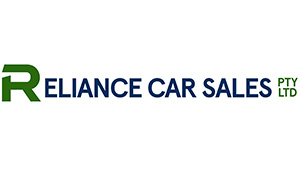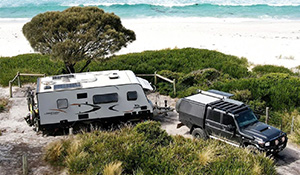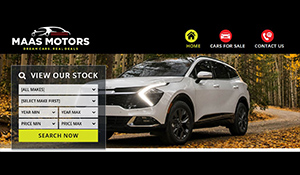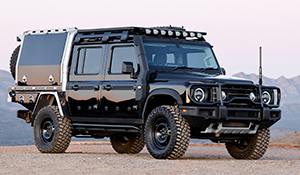4x4 Kei trucks
Photos: Courtesy of Davey Group
Large dual cab utes may dominate the new vehicle market in Australia, but not everyone wants or needs a vehicle of this size, nor the issues of fuel economy, difficulty in parking and high purchase price that come with them. There is an alternative out there, though, in the form of compact body-on-chassis trucks created for the Japanese market. Smaller, lighter, more manoeuvrable, more economical and often just as practical as the larger, heavier and thirstier dual cab utes that fill Aussie roads, these trucks are starting to be appreciated by off-road enthusiasts, as well as small businesses and even farmers.

Those with knowledge of the global automotive market will have likely heard of ‘kei’ cars (pronounced ‘KAY’). For those who haven’t, these vehicles, which include small trucks, vans and other special purpose vehicles as well as passenger cars, are a uniquely Japanese phenomenon.
Standing for ‘keijidosha’, which literally translates as ‘light automobile’, kei cars arrived in the post-WWII period and were the product of a series of Japanese government rules, created in collaboration with the country’s car industry. These rules dictated things like external dimensions, engine capacity and power output. While they were created to allow small vehicles to operate in the narrow streets of Japan’s largest and most congested cities, the benefits of kei cars saw them find buyers nationwide.
More economical and easier to park in crowded urban environments, what made kei cars additionally attractive was lower registration fees and reduced road and vehicle weight taxes compared to full-size cars.

Despite many of the taxation benefits being wound back in the past decade, kei cars still remain hugely popular in Japan and account for a big proportion of domestic market sales annually. That means there are a lot of makes and models to choose from; everything from nimble sports cars to compact commuters, light trucks and even people movers that put the “mini” into minivan!
Kei cars have been sporadically offered in Australia before, dating back to the early 1960s, when a handful of Subaru 360s were imported. The Suzuki Mighty Boy arrived in the 1980s, reinterpreting the classic Aussie ute in the smallest terms possible, while the Daihatsu Copen came here in the new millennium.
Now, the arrival of a new generation of kei cars, including vehicles never previously offered locally, is shaking up the Australian car market. Kei trucks offer usability and practicality, with surprising capability off-road, too.

Davey Motor Group
While several Aussie companies are importing and selling kei cars and kei trucks, Davey Motor Group is one of the largest players in this space and has a Japanese affiliate that’s been in business for more than 20 years.
Based in Geelong, Davey Motor Group sell all kinds of kei vehicles, as well as motorcycles and full-sized Japanese cars that were never officially imported here. Kei trucks have become the business’s specialty, though, as local buyers have started to catch on to the benefits of these vehicles. These include versatility, ease of use and lower purchase price, but buyers are also appreciating the build quality, reliability and serviceability. For those buying them for recreational purposes, kei trucks are just fun, too.

While other makes and models are available, the Daihatsu Hijet, Honda Acty and Suzuki Carry are the three main types that Davey Motor Group import it terms of trayback-style vehicles. As they’re all built to kei car regulations, external dimensions and engine size are mostly the same, with the differences coming down to styling, appointments and trim details.

Small… but Bigger than you Think
Most of the kei trucks that Davey Motor Group import are single cabs in the cabover body style that maximises load space. Dual cabs are available, but obviously, these greatly reduce the load capacity.
Using the Hijet single cab as an indicator, tray length is 2030mm at its deepest point and 1940mm at its shallowest. Tray width is 1410mm, drop sides are 285mm deep. For easy loading, tray height is a low 660mm. In comparison, the tray on a Toyota HiLux dual cab ute is shorter by 400mm and only marginally beats the Daihatsu in width and depth.

There’s also the option of a tipping tray (PTO or electronically operated, depending on model and age) that’s a practical alternative to the standard tray for farming, landscape gardening and even construction work where access is limited.
In terms of overall dimensions, the Hijet is 3395mm long, 1475mm wide and 1855mm high, with a 1900mm wheelbase, 160mm ground clearance and 12-inch wheels as standard. While height and wheelbase measures have changed as the Hijet has evolved (it’s now on its tenth generation), the width and length have been dictated by kei car rules. As the Acty and Carry are built to same rules, their external dimensions are the same, with only minor variations in things like tray length and wheelbase. The Carry, for example, has a longer and wider tray area, while the Acty’s is fractionally shorter.

Height and ground clearance can be raised with larger wheels/tyres and lift kits, while interior space is increased on available extended cab variants (more on those later).
Load capacity is officially 350kg across the board, with towing capacity at 500kg, although anecdotal evidence suggests these trucks can carry and pull more. Tow bars aren’t fitted as standard, but Davey Motor Group can supply a tow kit.

More Powerful Practical than you think, too
In terms of engine capacity, the limit for kei cars was increased from 550cc to 660cc in 1990. As the vast majority of the vehicles that Davey Motor Group import are C1990s or newer (some are brand new), most of their stock will have the larger engine.
While 660cc may seem meagre, it’s more than enough for buzzing around town and hitting 100km/h on highways, thanks in part to the trucks’ light overall weight. Despite speedometers that show 140km/h, these vehicles are realistically at their limit in the 100-110km/h range.
Naturally-aspirated three-cylinder petrol engines are the norm. Turbos a rarity, mostly limited to the older models, while diesels aren’t available.

Transmissions are typically five-speed manuals, with four speeds on the older trucks. Autos are more common in newer (2000 model year and up) vehicles, while selectable four-wheel drive with high-low range and a rear diff lock is a common feature.
Caylon Neely of Davey Motor Group explains that kei trucks like the Hijet, Carry and Acty are the default vehicle for farmers in Japan, hence the preponderance of four-wheel drive variants.

Well Equipped Inside
Despite their “rural” applications in Japan, kei trucks are well-equipped, especially the newer models, which come with features like radar cruise control, rear parking sensors and traction control. Inside, air conditioning is common, while newer models offer power windows, power mirrors, dual airbags, central locking and push-button starting.
For such a small vehicle, the cabin of a kei truck is surprisingly roomy, but Caylon advises that Aussie buyers should consider the extended cab versions, as the increased space and comfort they offer better suits ‘Western-sized’ drivers.

Using the Hijet as a measure, the ‘Jumbo’ version increases cab space by 90mm above and 270mm to the rear. The benefits of this include increased headroom and being able to fit reclining seats, with storage space behind. This obviously eats into load space a little, but the cab design means the full tray length remains unaltered at its lowest point.
Suzuki’s equivalent is the Super Carry, with similar increases in dimensions as the Hijet Jumbo. Honda doesn’t offer an extended cab version of the Acty.

Kei truck Benefits – Off-Road
For off-road work and bush bashing, bigger is always thought to be better, but kei trucks are turning this perception on its head.
Smaller 4x4s can negotiate narrower, twisty trails better than larger off-roaders, and being lighter (unladen capacity is only around 1,000kg), they’re less likely to become bogged and easier to extract if they do.
The only real measure where full-sized 4x4s have the advantage over kei trucks is in ground clearance, so negotiating deeply rutted tracks in these vehicles will be a challenge. To counter this, 2-inch lift kits are common, with 4-inch and higher lifts available, too, but these will impact the centre of gravity. Similarly, larger wheels and tyres can help, but the bigger you go, the more it impacts on the truck’s handling, braking and overall performance.

In terms of a ready-made off-roader, an aftermarket ‘Hard Cargo’ package that’s available for the Daihatsu Hijet Jumbo adds 14-inch wheels (with a beadlock look), a 2-inch suspension lift, rear mud flaps, a roof rack, spotlights, front bash plate and more. Some variations of this package include a full-length ladder-bar rack, additional spare wheel and fold-out tray extender. Other notable touches include a rear light to illuminate the tray and multiple cupholders in the cabin.

Cosmetically, the Hard Cargo adds black decals to the Hijet Jumbo’s olive green paint for a tough military look, while in the cabin, there are specially-trimmed seats, a centre console touchscreen, 12V outlet and more.
As the Hard Cargo package is a relatively new thing, most of the Hijet Jumbos fitted with it at Davey Motor Group, are 2022 models. Being near-new vehicles, Hard Cargo-equipped Hijets have all the aforementioned safety and convenience features, too.

Kei Truck Benefits – Farming
While early adopters of kei trucks here in Australia are using them for everything from economical daily runabouts to business promotion vehicles, they also have a potential for farm use that’s currently untapped.
Compared to most Side by Side and UTV vehicles from John Deere, Polaris, Kubota, Kawasaki and the like, kei trucks have more power, a larger tray area, increased payload and towing capacity, better fuel economy and a fully enclosed weatherproof cabin. In winter, that feature alone will pay for itself! Four-wheel drive means they can tackle most of the same terrain that a UTV can, too.

Caylon points out that the greatest benefit kei trucks offer over Side by Sides is that they are fully road registerable, meaning their usefulness doesn’t end at the farm gate. The cost of registration (which can be reduced for primary producers) is outweighed by the practicality of not having to change vehicles when running into town to pick up feed, supplies or other essentials. And remember, payload is 350kg, so these kei trucks can carry a load.
Being right-hand drive from the factory, kei trucks easy to register here, too, unlike in the USA, where RHD vehicles less than 25 years old cannot be road registered and are sold as ‘farm use’ vehicles.
For around the same cost as a new UTV, a kei truck offers true dual-purpose capability, being usable off-road and legal on-road, while the heating and air con makes them more comfortable and practical in all weathers.

Kei Truck Pricing
Depending on the make, model, age and spec you go for, kei truck prices vary. At time of writing, Davey Motor Group had a standard cab Acty available for under $15,000 drive away. Newer models, like a 2018-2020 Carry, can be had for around $23,000 drive away. That’s comparable with a new UTV.
Some of the newest kei trucks from Davey Motor Group have delivery miles only, but are still very affordable, listing for less than $30,000 drive away. A virtually new Hijet with the Hard Cargo package is currently the most expensive kei truck available from Davey Motor Group, at $38,990 drive away.

All kei trucks from Davey Motor Group come with a warranty, with extended warranties of 5 years available. Davey Motor Group also offers third party finance.
Given the relative rarity of kei trucks in Australia, along with the unique nature of their many components, the range of spares and upgrade parts available locally is minimal. Davey Motor Group can help here, though, with spare parts and accessories in stock that include lift kits, towing packages, larger wheels and off-road tyres.

Find out More
To see the full stock of kei trucks, as well as other Japanese import vehicles available through Davey Motor Group, visit their website at daveymotorgroup.com, call 1300 855 133 or visit their showroom at 5/21 Leather Street, Breakwater (Geelong).









